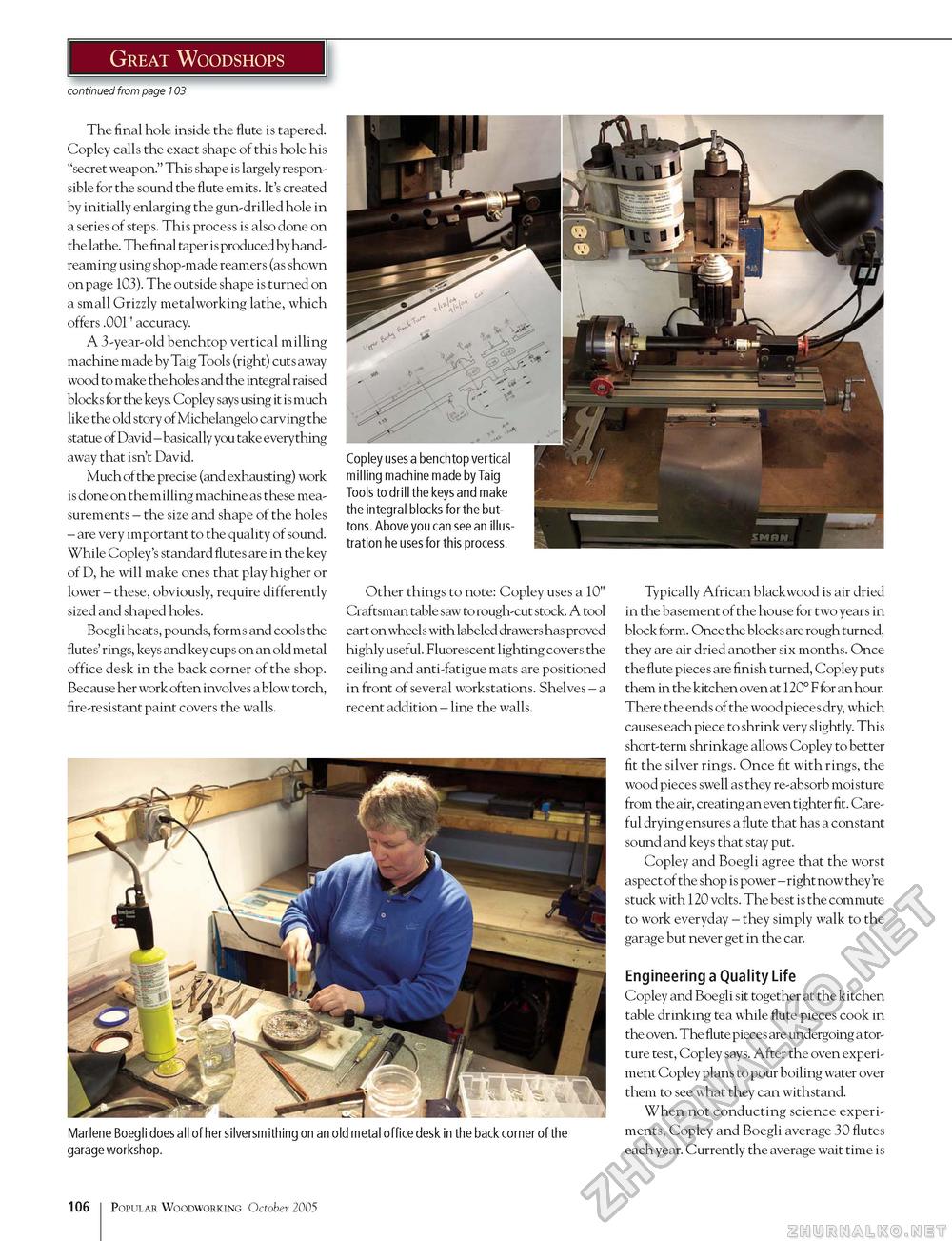Popular Woodworking 2005-10 № 150, страница 110
Great Woodshops continued from page 103 The final hole inside the flute is tapered. Copley calls the exact shape of this hole his "secret weapon." This shape is largely responsible for the sound the flute emits. It's created by initially enlarging the gun-drilled hole in a series of steps. This process is also done on the lathe. The final taper is produced by hand-reaming using shop-made reamers (as shown on page 103). The outside shape is turned on a small Grizzly metalworking lathe, which offers .001" accuracy. A 3-year-old benchtop vertical milling machine made by Taig Tools (right) cuts away wood to make the holes and the integral raised blocks for the keys. Copley says using it is much like the old story of Michelangelo carving the statue of David - basically you take everything away that isn't David. Much of the precise (and exhausting) work is done on the milling machine as these measurements - the size and shape of the holes - are very important to the quality of sound. While Copley's standard flutes are in the key of D, he will make ones that play higher or lower - these, obviously, require differently sized and shaped holes. Boegli heats, pounds, forms and cools the flutes' rings, keys and key cups on an old metal office desk in the back corner of the shop. Because her work often involves a blow torch, fire-resistant paint covers the walls. Copley uses a benchtop vertical milling machine made by Taig Tools to drill the keys and make the integral blocks for the buttons. Above you can see an illustration he uses for this process. Other things to note: Copley uses a 10" Craftsman table saw to rough-cut stock. A tool cart on wheels with labeled drawers has proved highly useful. Fluorescent lighting covers the ceiling and anti-fatigue mats are positioned in front of several workstations. Shelves - a recent addition - line the walls. Marlene Boegli does all of her silversmithing on an old metal office desk in the back corner of the garage workshop. Typically African blackwood is air dried in the basement of the house for two years in block form. Once the blocks are rough turned, they are air dried another six months. Once the flute pieces are finish turned, Copley puts them in the kitchen oven at 120° F for an hour. There the ends of the wood pieces dry, which causes each piece to shrink very slightly. This short-term shrinkage allows Copley to better fit the silver rings. Once fit with rings, the wood pieces swell as they re-absorb moisture from the air, creating an even tighter fit. Careful drying ensures a flute that has a constant sound and keys that stay put. Copley and Boegli agree that the worst aspect of the shop is power - right now they're stuck with 120 volts. The best is the commute to work everyday - they simply walk to the garage but never get in the car. Engineering a Quality Life Copley and Boegli sit together at the kitchen table drinking tea while flute pieces cook in the oven. The flute pieces are undergoing a torture test, Copley says. After the oven experiment Copley plans to pour boiling water over them to see what they can withstand. When not conducting science experiments, Copley and Boegli average 30 flutes each year. Currently the average wait time is 106 Popular Woodworking October 2005 |








